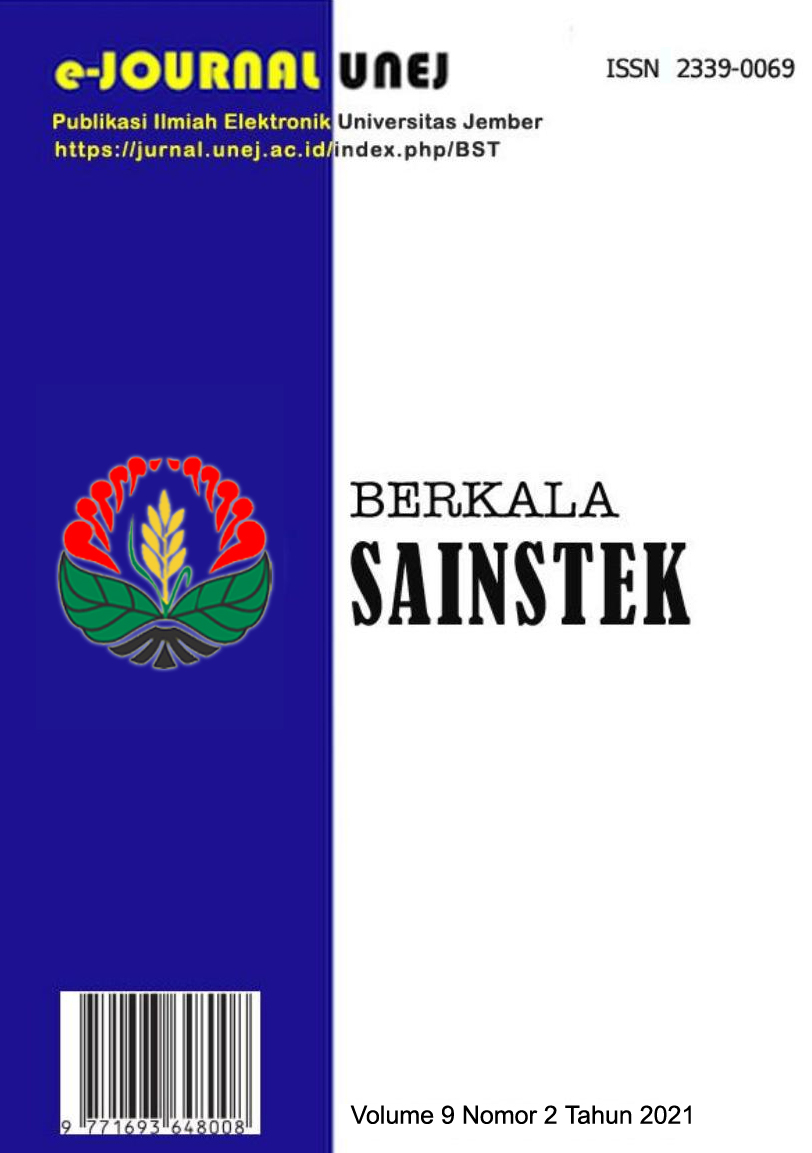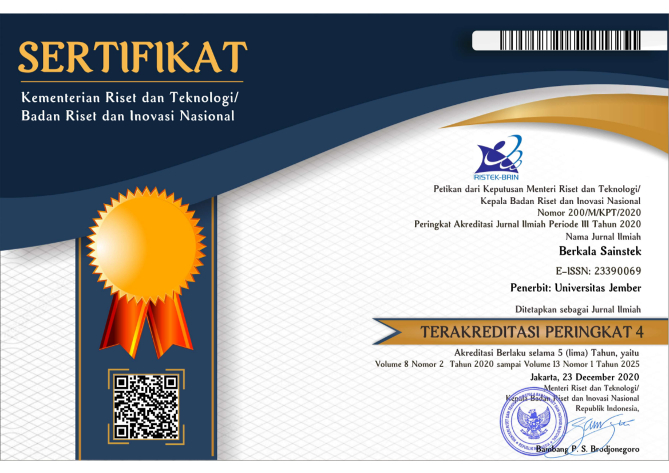Synthesis and Characterization of Bacterial Cellulose-Polyaniline Composite with Variation of Dopant Concentration
DOI:
https://doi.org/10.19184/bst.v9i2.18120Keywords:
Bacterial Cellulose, Composite, Dopant, PolyanilineAbstract
Polyaniline is a type of conductive polymer. Bacterial cellulose has high mechanical properties, so it can be made into polyaniline base composite materials. A stable form of polyaniline oxidation at room temperature is emeraldine base. The emeraldine base has a conductivity value of 10-6 S/cm. Dopants can change the shape of emeraldine base to emeraldine salt by protonation process. Emeraldine salt is a conductive form of polyaniline. The conductivity value of emeraldine salt is 0,03-0,07 S/cm. The addition of dopan in synthesis of polymer was carried out to determine its effect on the conductivity value. The disadvantage of polyaniline is that its mechanical properties are weak and easily brittle. Modifications are needed to improve the mechanical properties of polyaniline, one of which is the manufacture of composite. Bacterial celluloce has high mechanical properties so it can be made into polyaniline base composite materials. Synthesis of bacterial cellulose-polyaniline composites by in situ chemical polymerization methods. Syntehsis is started with BC membrane was dipped into aniline solution for about 2h with stirring at room temperature. The BC was immersed into ammonium peroxydisulfate solution for about 30m with stirring. The bacterial cellulose-polyaniline compositions obtained are black color which is characteristic of the emeraldine salt. The highest conductivity value of composite was obtained from the addition of 3,5M HCl dopant which was 4,70x10-4 S/cm. FTIR analysis of composite obtained peak of the characteristic polyanilin was conductive at 1565,92 cm-1 as C=C quinoid ring and 1442,95 cm-1 as C=C benzoid ring.






